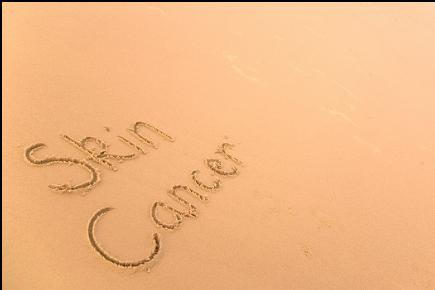Signs That You May Have Skin Cancer
posted: May 21, 2019.

Do you ever think about skin cancer? If you're over 40, tan, or spend time in the sun, you definitely should! After all, new cases of skin cancer are diagnosed to almost 10,000 Americans daily, according to the American Academy of Dermatology. Vigilance and early detection are the keys to a successful cure, and here at Atlanta Skin and Aesthetics in Atlanta, GA, Dr. Jay Levin prioritizes the discovery of skin cancer symptoms during each in-office exam that he performs. Do you know the signs of skin cancer?
Kinds of skin cancer
The most common forms are squamous cell carcinoma and basal cell carcinoma. These malignancies grow in the upper layers of the epidermis (i.e. the top strata of the skin). Highly treatable when detected early on, these cancers usually grow in areas of the body exposed to the sun such as the face, arms, and back of the neck.
The other well-known skin cancer in Atlanta is malignant melanoma. Occurring in pigment-producing skin cells called melanocytes, melanoma spreads quickly to other areas of the body and to the major organs. Known as deadly, melanoma, too, has a high cure rate when detected and treated early.
While dermatologists see sun (UV radiation) as the major culprit in all skin cancers, heredity seems to play a role, as does:
- Having many moles
- Being light-skinned and blue-eyed
- Having had repeated sunburns
Signs you may have skin cancer
The American Academy of Dermatology says that skin changes often signals danger. Spots, freckles, or moles which evolve, itch, bleed, scab, or become rough may be cancerous. In fact, the Melanoma Research Foundation says that change in mole appearance is the single most important characteristic which alerts doctors to malignant melanoma.
It is also recommended by the American Academy of Dermatology that teens and adults carefully inspect their moles for changes. An easy way to know what to look for is to use the ABCDEs of moles:
- A for asymmetry: A non-cancerous mole is shaped symmetrically—irregularity, or asymmetry, indicates cancer.
- B for borders: Cancerous moles typically have notched or scalloped edges while the borders of benign moles are smooth.
- C for color: Healthy moles are normally tan or brown throughout the entire mole. Specks, dots, or varied shades of color are danger signs.
- D for diameter: Usually, malignant moles grow to be larger than 6 millimeters.
- E for evolving: Tell Dr. Levin right away about a mole which changes in size, color, texture, or shape.
Concerned? Give us a call!
Inspect your moles, and see Dr. Jay Levin at Atlanta Skin and Aesthetics for a routine skin check-up. Phone the office for an appointment at (404) 252-4110. We open at 7:15 am for your convenience.
